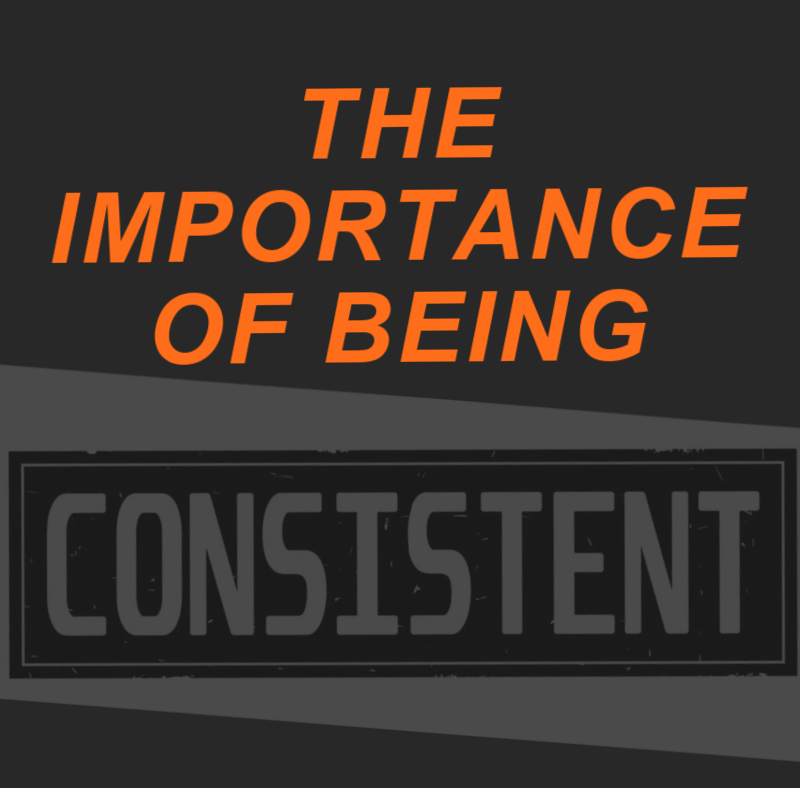
Every personal trainer knows unequivocally that being consistent in exercise and diet is most likely to produce desirable results. As obvious as this may be to us, don’t mistakenly assume your clients have a deep understanding of what being consistent really means. Research on exercise frequency and consistency abound; sharing with your personal training clients the importance of being consistent may relieve some of the pressure they place on themselves and make them more likely to attain their goals.
What Does Being Consistent Mean?
The being “consistent” according to Merriam-Webster is to be “marked by harmony, regularity, or steady continuity: free from variation or contradiction”. I like the first half of that. Finding harmony–a rhythm–in one’s routine is where the magic happens.
We’ve all had a client who blazes into their introductory session with the best of intentions, oozing with enthusiasm and ready to commit to a lifestyle change they believe to be achievable. They proclaimed they will exercise five days a week and you had no reason to doubt that. But, three months later, you’ve figured out that they are showing up to their bi-weekly sessions but not doing the additional work on their own.
That’s okay. Let them know that it’s okay.
We might feel compelled to explain how lifting four to five days a week will optimally produce the hypertrophic growth associated with increased strength and fat loss. However, if your client can only realistically adhere to two to three days a week, then your role is to support them in the commitment to those days and alleviate any guilt associated with the mistaken notion that more days is what is necessary to achieve their goals.
Your Role as Coach
Your job as a coach is to cultivate an understanding of who they are as a person, nail down their unique needs, and help them to capitalize on their strengths.
Results will be realized more slowly, yes. But, what’s more likely to inhibit progress is a self-imposed guilt trip fueled by their trainer’s judge-y line of questioning….”Did you get to the gym this week, Mary??”
Before you lose Mary as a client altogether, lower your own expectations for your client and allow them to lower theirs if initial goals are not being met. You might be surprised to learn that letting them off the hook for the days they aren’t seeing through allows them to be more present for the days that they are. In that, they are still being consistent in exercise those two days a week.
The Consistency Trap
More important than frequency, then, is finding that rhythm and maintaining it most of the time. This means that life occasionally happens. Women have babies, professionals lose jobs, and divorces upend families. Having a rhythm disrupted does not mean the song has to end. But some folks with an all-or-nothing mentality believe that once they have fallen off the horse, all is lost. Getting back on might feel like the most daunting task because they feel as though all the work they’ve put in has gone poof!
This is where you can teach them about muscle memory. Muscle memory is not just a phrase, it is a studied phenomenon. Researchers have determined that a muscle that was previously hypertrophied, and yet subsequently atrophies, will regain its size far more quickly than muscle fibers never challenged. 1
This is an important concept for your clients to understand. While there is a definite mental hurdle to returning to exercise after a hiatus, the physical challenge will never feel quite as painful as the first time around.
Aside from major life disruptions stalling an exercise program, we can also have an off week time and again. Remind your clients that they deserve some grace and that missing a workout here and there will not be the destruction of their fitness progress.
Still, current guidelines recommend a minimum amount of physical activity a week (150 cumulative minutes of moderate exercise) in order to attain certain health benefits. We all would do well to explain these guidelines and that truly our minimum goal should be to achieve that much. Your role as a coach is to support and encourage, however—never guilt or shame.
The take-home here is to know the person in front of you, set realistic expectations for them, and if goals are easily met, you can always raise the bar.
References
(1) https://journals.biologists.com/jeb/article/219/2/235/33480/Muscle-memory-and-a-new-cellular-model-for-muscle
(2)https://iaap-journals.onlinelibrary.wiley.com/doi/abs/10.1111/aphw.12032
(3) https://pubmed.ncbi.nlm.nih.gov/31267674/
(4)https://journals.sagepub.com/doi/abs/10.1177/1359105315611956








